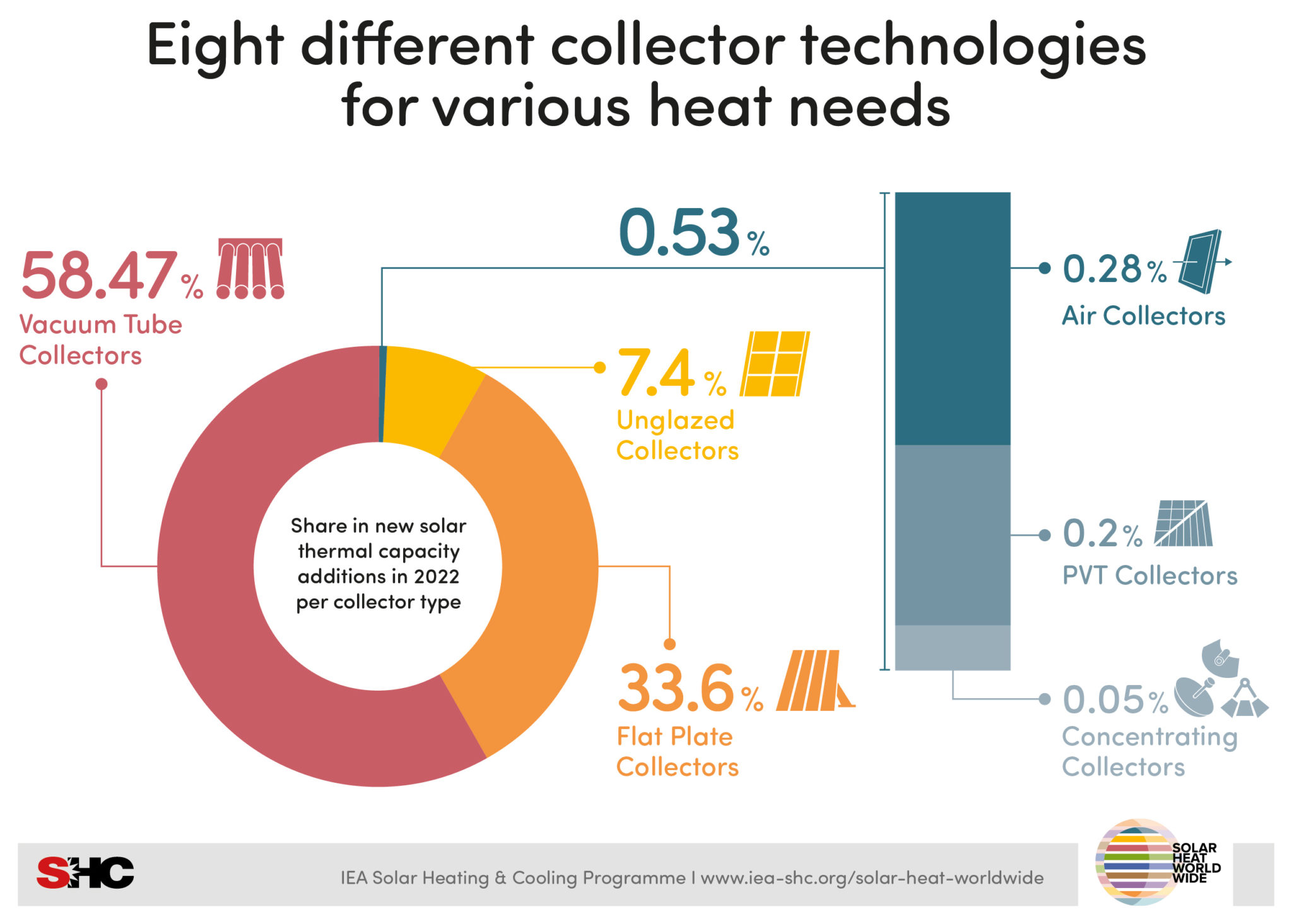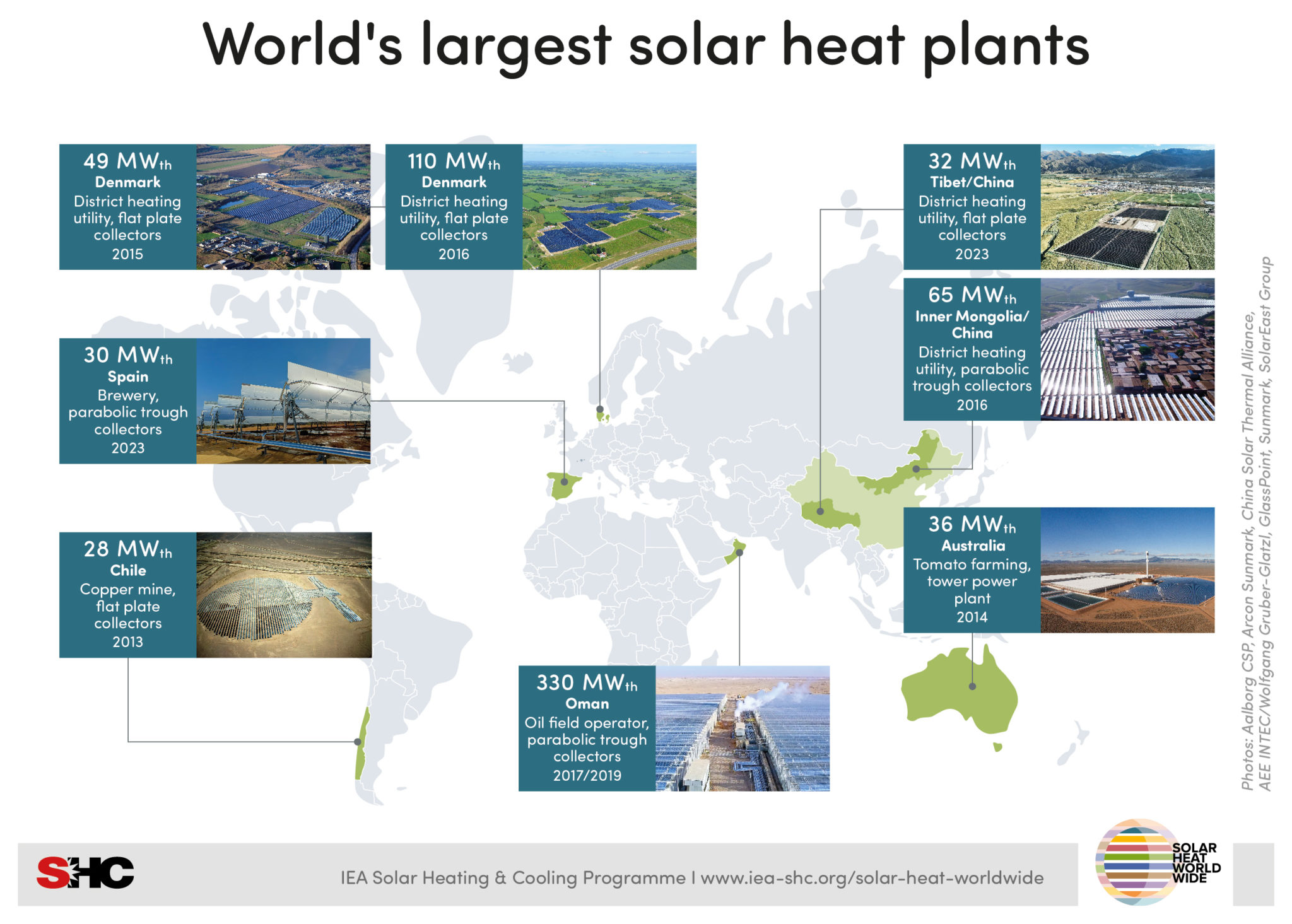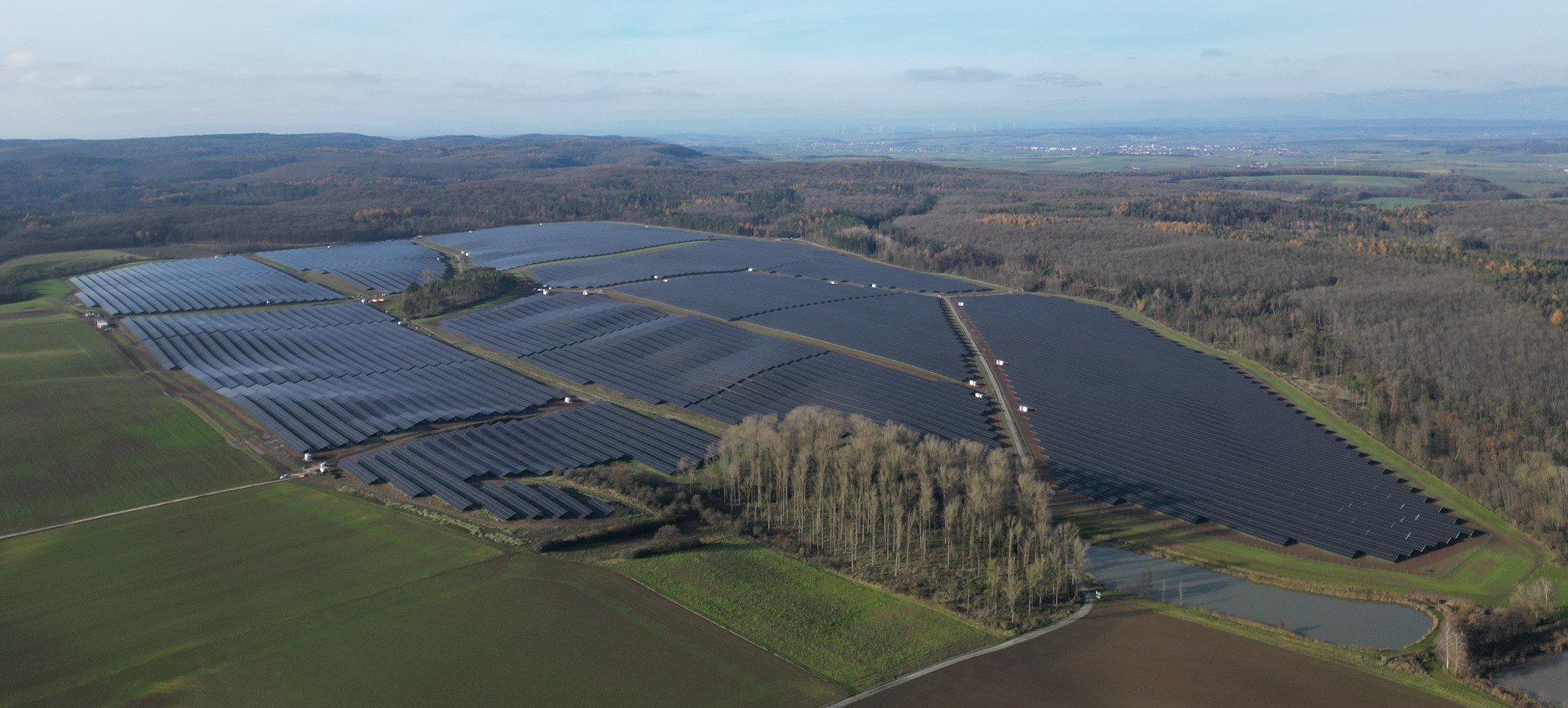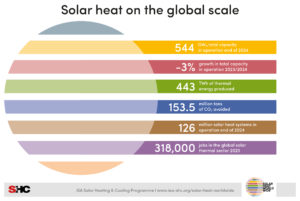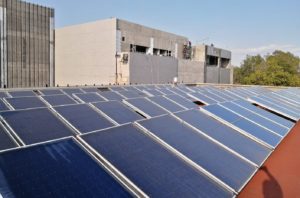Solar Heat Worldwide: two more new world’s largest solar heat plants
June 12, 2024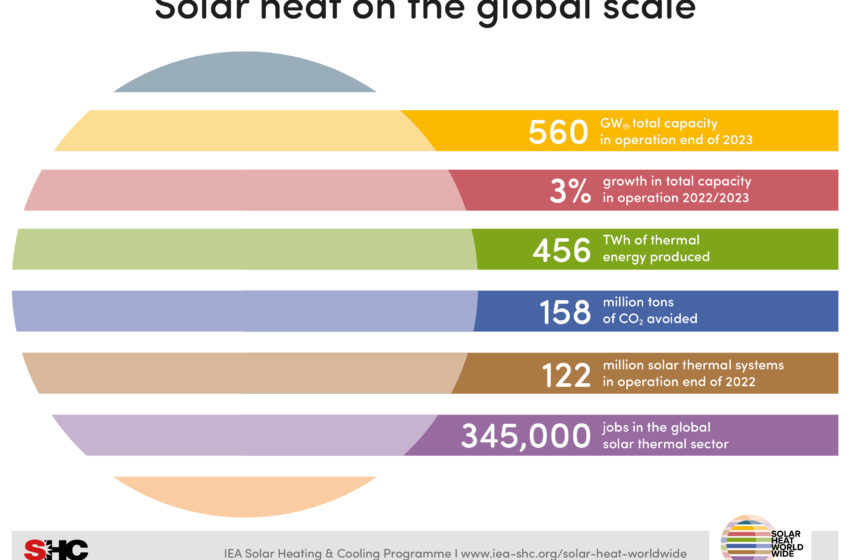
Solar heat is a versatile technology that now provides heating services to 122 million customers worldwide. The just published Solar Heat Worldwide study, edition 2024, contains the latest data on all the relevant applications – residential water heating, district heating, process heat, cooling and drying. Two dynamically growing technologies – PVT collectors and PV-generated electrical heating systems – are treated in separate, detailed chapters. Published annually by the Austrian institute AEE INTEC and the IEA Solar Heating and Cooling Programme, Solar Heat Worldwide has become a well-trusted source of solar heat data and a go-to reference for international organizations such as REN21 and IRENA. A new set of infographics highlights some of the key data from the report. You are welcome to use the infographics in your own communications. They can be downloaded: https://www.iea-shc.org/solar-heat-worldwide
Source of infographics: IEA SHC Programme
The Solar Heat Worldwide author team has once again spared no effort in gathering market data from over 70 countries to provide a very comprehensive overview of developments on the global markets. The data also includes the distribution of the newly installed solar thermal capacity across various applications. This was used to determine the top five markets (see chart below). It is clear that solar heat has become established in many countries around the globe.
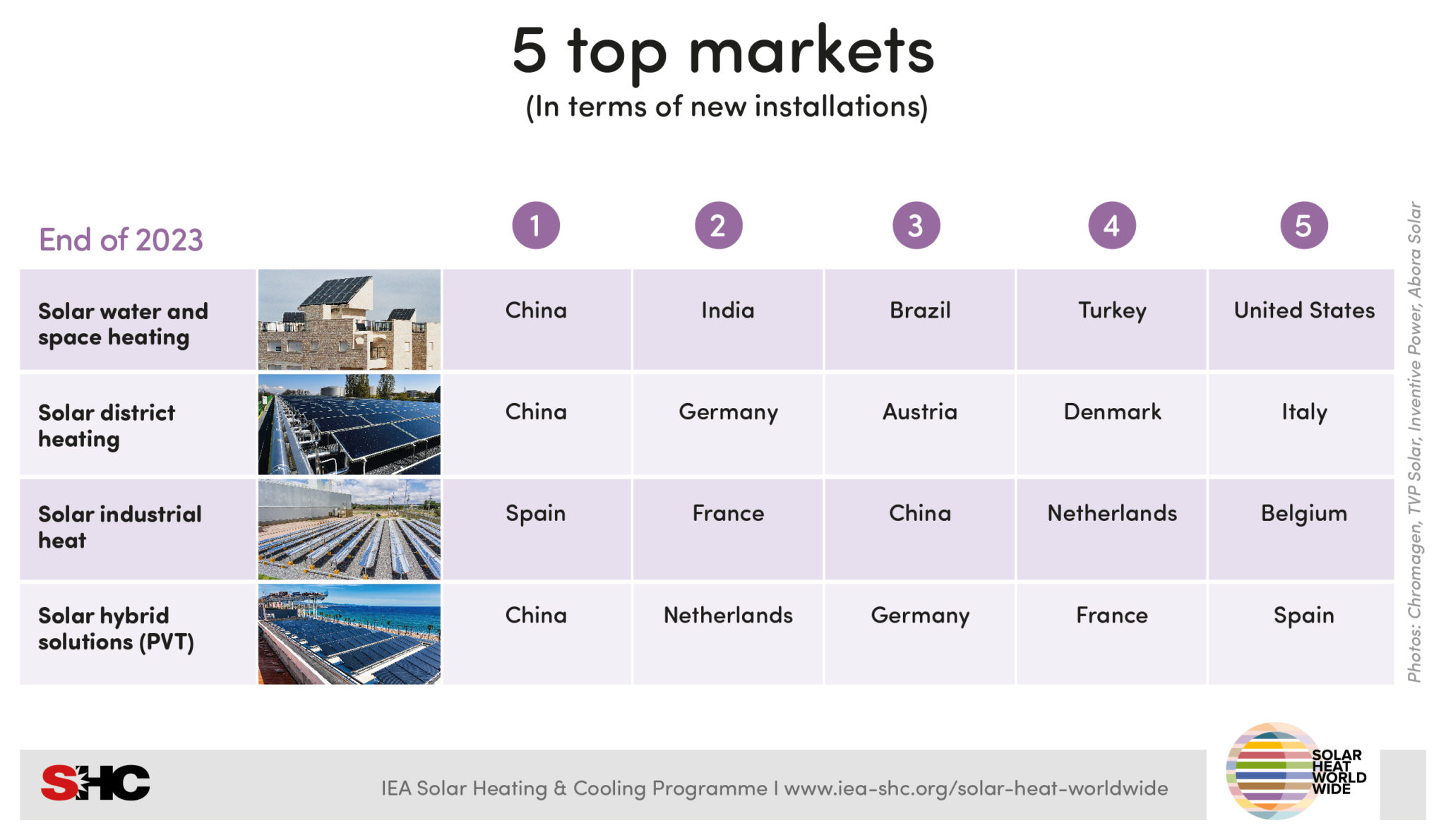
Solar heating and cooling systems serve at least 122 million residential, commercial, and industrial clients worldwide using a wide variety of technologies. The global market is dominated by vacuum tube collectors, primarily due to their large market share in China. The so far niche collector types air, PVT and concentrating collectors currently account for less than 1 % of newly installed solar heat capacity, but they have great potential for growth. PVT collectors are increasingly being used in combination with heat pumps, especially in Europe and China. Concentrating collectors are used on a large scale by industrial companies to supply heat above 100 °C.
Growing number of multi-MW plants in the planning stage
In the chapter ‘Outlook 2024 and beyond’, the authors of the Solar Heat Worldwide report list some really large solar heat systems that are currently being planned. Among them:
- 1.5 GWth for an aluminium refinery in Saudi Arabia planned by Glasspoint, USA
- 154 MW for copper mines in Chile planned by Gasco, Chile
- 16.4 MW for a malting plant in Croatia planned by New Heat, France
Based on the announced large-scale plants, the authors of the study observe that the “demand for large-scale solar heat systems appears to be increasing in 2024”. They add: “If one also considers that the development of large-scale systems for solar district heating and industrial process heat has a long lead time and that most of the policies related to renewable heat were only implemented in 2022, then it can be assumed there will be significant growth in the number of solar heat systems in the coming years.”
The following chart shows the eight largest solar heat plants in operation worldwide to date. Two new large-scale plants were added in 2023:
- 30 MW for brewery Heineken with parabolic troughs in Spain realized by Solarlite, Germany
- 32 MW for district heating utility in Tibet/China, realized by Solareast Group, China
Solar electricity is the fastest growing renewable heat source in buildings
For the first time the Solar Heat Worldwide report includes a dedicated chapter about photovoltaic generated heat. The authors quote the Renewable 2023 report of the International Energy Agency that “renewable electricity will be the fastest-growing renewable heat source in buildings between 2023 and 2028. Its use will expand by two-thirds globally and contribute almost 40 % of the sectoral increase in renewable heat consumption”.
Solar Heat Worldwide lists four areas where PV is used for hot water and/or heat supply:
- PV2Heat systems feed the direct current from rooftop PV panels directly to a DC resistance heating element in a hot water tank. By the end of 2023, around 34,000 PV2Heat systems had been installed in South Africa.
- Partially coupled PV hot water technologies are attractive in markets with a high share of PV capacity penetration, such as Australia. Smart meters optimize self-consumption of PV electricity in electric water heaters.
- Solar combi-systems powered by PV are a relatively new application with first projects reported from Switzerland and Germany. Here, a solar combi-system – for hot water and space heating supply – is partly powered by solar electricity.
- PV district heating: In September 2023, a ground-mounted photovoltaic system with a capacity of 125 MW was commissioned in the German municipality of Bundorf. 1.5 MW of the PV plant is directly connected to the neighbouring heating centre of the district heating network. There, a 400 kW electric boiler and a 200 kW air heat pump process the solar power into heat. Solar power will generate approximately 54% of the heat demand for an initial 30 connected buildings throughout the year.
125 MW PV system in Bundorf, Germany, uses part of the solar electricity to supply heat to the district heating network Photo MaxSolar
Websites of organizations mentioned in this news article:
Solar Heat Worldwide: https://www.iea-shc.org/solar-heat-worldwide
IEA Solar Heating and Cooling Programme: https://www.iea-shc.org/
AEE INTEC: https://www.aee-intec.at/
Glasspoint: https://www.glasspoint.com/
Solarlite CSP Technology: https://www.solarlite.de/en/
Gasco: https://www.gasco.cl/
New Heat: https://newheat.com/en/
Solareast Group: https://en.sunrain.com/
